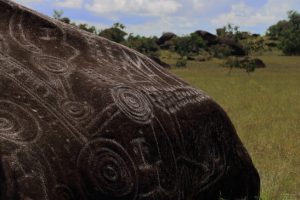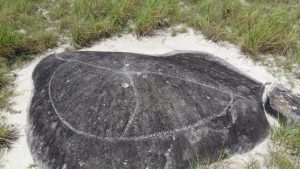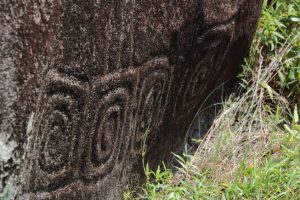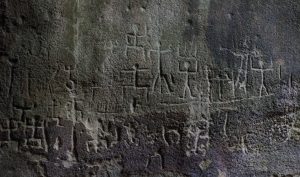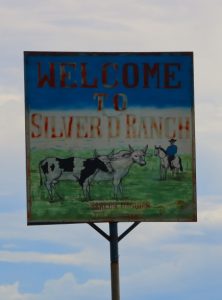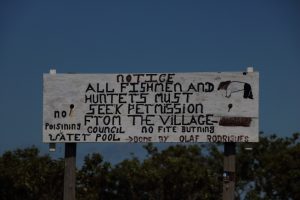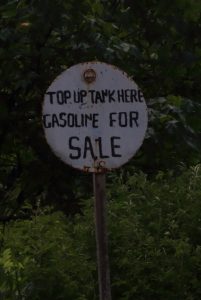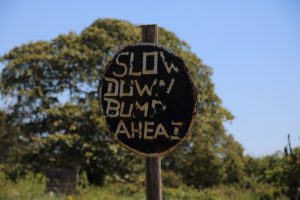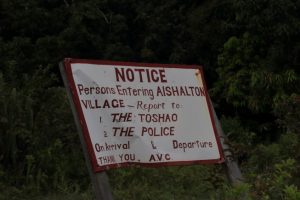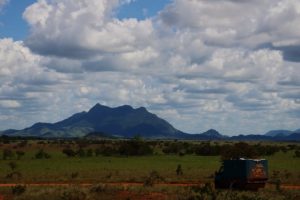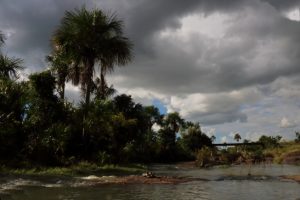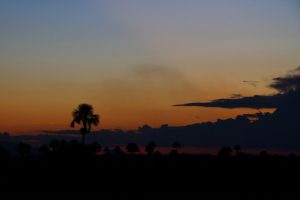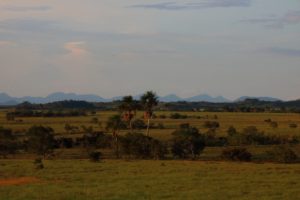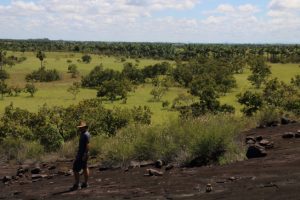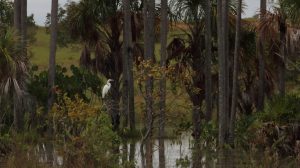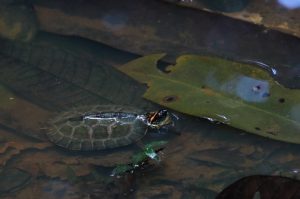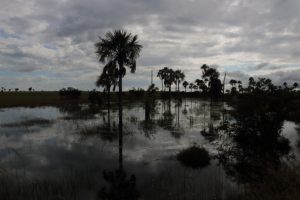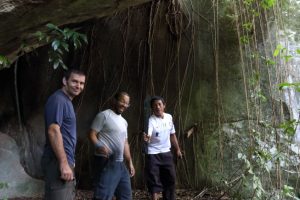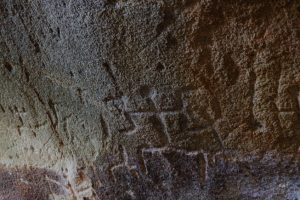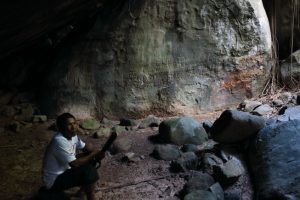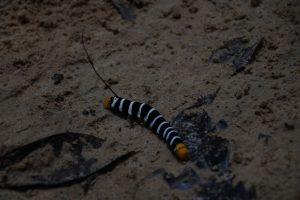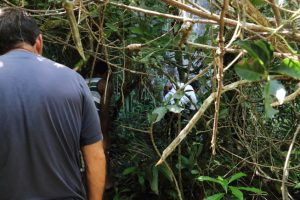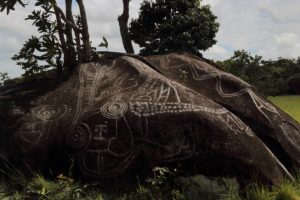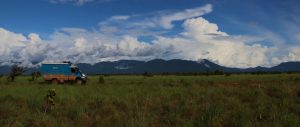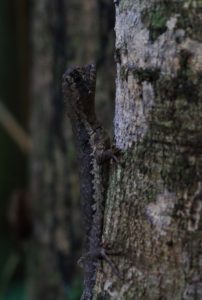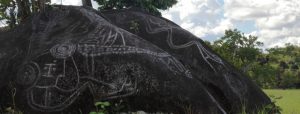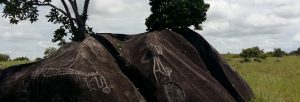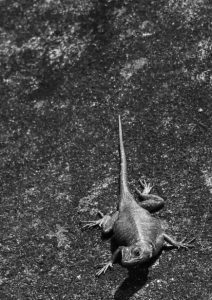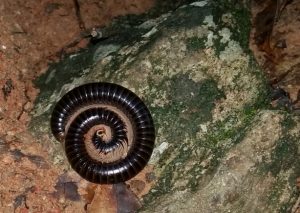Every now and then, overlanding travel throws up not just a gem, but a surprising gem. A kind of “Well! Who knew???” moment. In south Guyana we have such a moment. After the minor disaster that was our short-lived attempt to reach Kaieteur, in the Guyana Rupununi we’re surprised to find compensation in spades: the beauty of the savannahs and the little visited Amerindian petroglyphs.
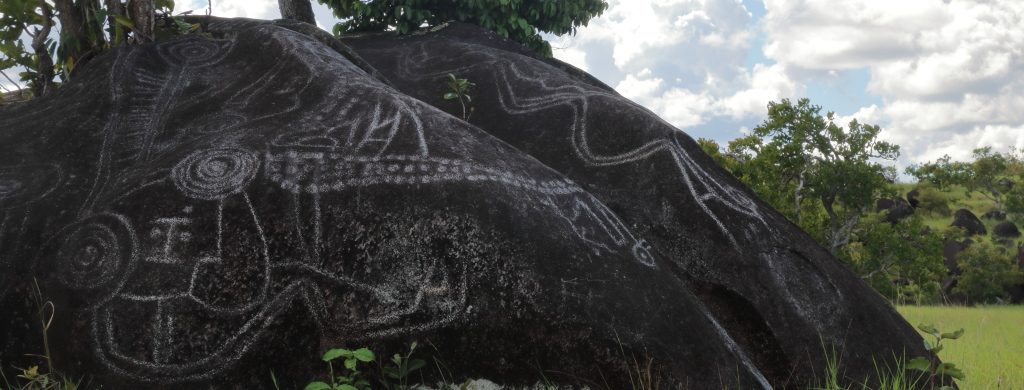
The long way south
In Guyana we didn’t expect to find much more than rough dirt roads through jungle. The rough roads… yup, plenty that. But the jungle… turns out, the country isn’t just jungle! The first half of the 550km of the north-south highway… errr… rough pot-holed track, is indeed through jungle… jungle so dense, you can barely see a foot off the side of the road. We’re still in mini-convoy with the friendly Costa Rican, Erick and his camp-truck Dora, so we’re tackling the mission together.
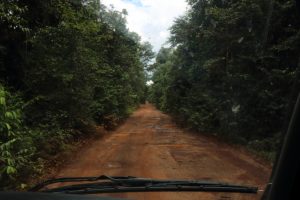
From this…
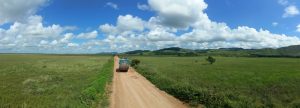
… to this!
What appear to be precariously laid tree-trunks are actually bridges over small rivers, but they’re allegedly strong enough to take weight of the enormous logging trucks. The observant might have spotted the key-word here: ‘allegedly’. Sometime later, we see on the local news that just hours after we passed down this road, a logging truck collapsed through one of these ‘bridges’, getting stuck in the river below and closing the whole road for days! Ooops.
Our own minor mid-jungle incident with Cuthbert involves a sudden cloud appearing from under the bonnet! Oooh nooo! It didn’t look too healthy. Good news – it’s steam, not smoke. Bad news – Cuthbert has a small hole through the casting of his EGR heat exchanger – no… I don’t know what it is either. My technical consultant (aka Marcus) managed a ‘bodge-it & scarper’ field repair by mixing-up some magic potion and plugging it into the newly-blown hole. Seems to work.
Onwards again, the jungle seems never-ending until suddenly, some 100km south of the Kurukupari river crossing, the scenery suddenly gives way to vast, wide-open savannah land. Cor blimey!! We can suddenly see for miles across the plains to the Kanuku Mountains in the distance. It’s a real shock to the senses after the miles of limited visibility in the jungle.
Another thing we notice south of the jungle is that in all the villages, we are to all intents and purposes, more in Brazil than Guyana. Technically we are of course still in Guyana, but the road signs are now often in Portugese, the shops are called ‘lojas’ and the bars sell Brazilian beer. Another sign that we are ‘in’ Brazil is the bowl of beans that we are served with our fried chicken in a small road-side café (tasty… but very Brazilian). And if final proof of the situation is required, only in Brazil does one find racks of flip-flops for sale in every shop in town 🙂 .
Guyana Rupununi
In Lethem, we stop briefly to pick-up supplies and some information from the Conservation International Office. Candace tells us about the things to see in the remote, far-south Rupununi region and the customs expected of us when visiting the communities out there. Over 160km away across the plains is the village of Aishalton with some curious petroglyphs. Worth a look, eh?
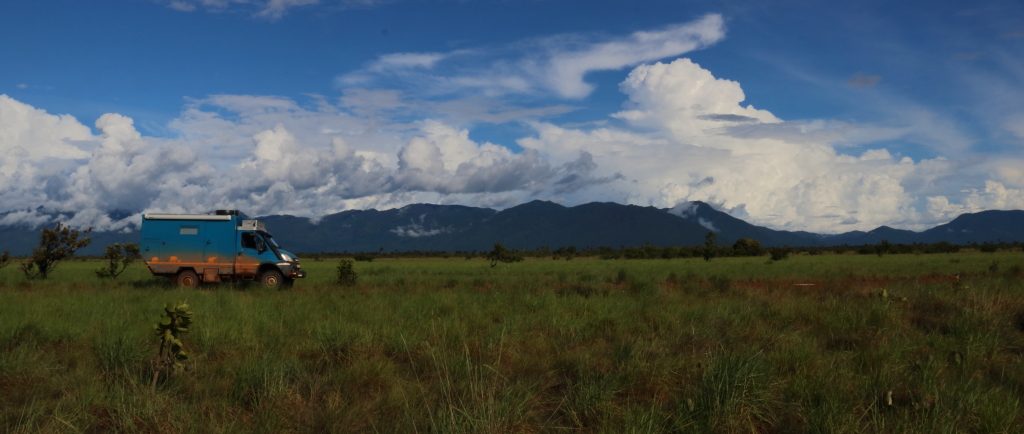
If we thought the main north-south road was slow-going, these Rupununi back-roads make that look like London’s M25! In the rainy season the tracks out here swamp-over and are mostly impassable. Now is, in theory, the rainy season except they haven’t actually had much rain this season… Yet. What are the chances of us getting all the way there and back before the rains come? 🙂
Habitation is very sparse out here in the Rupununi savannah. Between the few scattered communities we see very few people. The route crosses some idyllic streams along the way; it would be rude not to stop for a swim and admire the scenery from the water 🙂 . The big-sky scenery just goes on and on. The further south we go, the better it gets! Views all the way to a horizon where the bright emerald green, palm-dotted grasslands meet an azure blue sky, scattered with enormous puffed-up clouds.
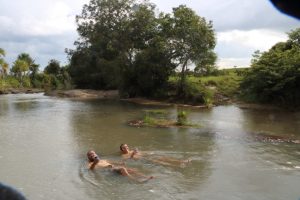
The Dangerous Brothers – beer in the river
Finally, after a couple of days exploring, we arrive in Aishalton. We report to the Tuschau (the village chief) who welcomes us and asks guide Martin to show us to the ancient petroglyphs. Just a short drive through swampy bushland from the village are scattered some extraordinary decorated, granite mounds, thought to be around 7,000 years old. The Amerindian carvings are deep and very clear in the granite. Well! Who knew Guyana had such a treasure?
Experts are undecided as to their exact meaning of the images, but the consensus seems to be that they were carved out by the shamen for spiritual and worship purposes. Near the open-air granite rocks are caves in which the ancient Amerindians lived. Inside are more rock-carvings and evidence of their living and kitchen areas. Martin tells us the handed-down stories of the battles that took place on these lands between the various Amerindian tribes; he takes us to the battlefields where the boundaries between local cultures are still observed. All this is topped-off by a tasty local chicken dish with rice and noodles back in the village. Marvellous day.
Finding these snippets of history in unexpected places is fascinating stuff. Admittedly Aishalton is something of a schlepp to get to, but if you like a bit of remote rough-roading with a few nice views, then it’s right up your street!
Goodbye Guyana
Heading now back to Brazil, what to make of Guyana? Hmmm… that’s a tough one. Let’s start with the warmth of the welcome and the genuine friendliness of the people. Even in the rainy season Guyana has a ‘sunshine’ atmosphere and a great Caribbean ‘Yeah-man’ chilled-out vibe. It’s an attractive and adventurous country. However, Guyana doesn’t make things easy or cheap for the tourist, so let’s get our small rant out of the way….
First, the roads. There are few of them and most are in a terrible condition. Around towns or cross-country, they’re in a pretty poor state. The main north-south highway from Georgetown down the length of the country is extremely bad with many, many pot-holes, some of which would swallow a small family sedan-car if the driver of such a vehicle were foolish enough to venture out there.
Then there is the cost of travelling in Guyana. Nothing is cheap here. Let’s just assume for a minute that you do have a vehicle capable of negotiating said potholes… you might want to venture out to see the country, right? Well, if you do, be prepared for some pretty steep (correction… very steep) ferry crossing prices.
Not everything in the country is quite as expensive as the river ferries, so let’s come on to hospitality. Food and drink in Guyana is generally very tasty – great street food and a significant Indian immigrant population provides excellent curries and rotis – but it is at European prices. And service level in shops/cafes challenges the Guyanese roads for its lack of excellence. We found the serving staff generally giving something less than two hoots about their customers. The shoulder shrugs and the total look of disinterest on many of their faces takes the term ‘rampant apathy’ to a whole new level! All this is a bit puzzling given the overall friendly reception we received from people on the street.
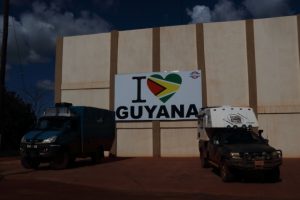
Cuthbert & Dora Love Guyana 🙂
Okay! Rant over. Despite all this, Guyana is still a great country to visit and the Rupununi experience was one of the best surprises of all our travels so far. The staff in the tourist offices of both Georgetown and Lethem could not have been more helpful. To their great credit, they immediately recognised our travel style and didn’t try to push us into unwanted commercial guided tours. They went out of their way to find and provide information relevant to what we wanted to do. They were also proactive in following that up with email updates on flood conditions etc. Big thanks to Treina and Candace.
Now another border crossing looms… back to Brazil. The ‘bodge-it’ repair to Cuthbert’s EGR is still holding well… keeping our fingers crossed on that! Over the border, just down the road in Boa Vista we have a big decision that we’ve been mulling this over for many weeks now, putting it off… putting it off… Very soon we’ll have to turn either: right (north) to Venezuela; or left (south) to Manaus and the Amazon crossing to Peru. It’s a dilemma and we’re not sure what do. Toss a coin? Maybe we could have a Referendum on the matter…can you tell we’re Brits? 🙂
Link to next blog: Manaus and the Venezuela Option Link to full South America Blog
Guyana Crossing: The Movie 🙂
Rupununi Views
- The Dangerous Brothers – beer in the river
- … to this!

